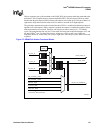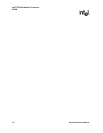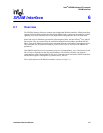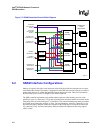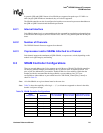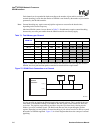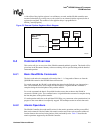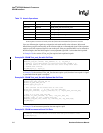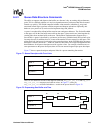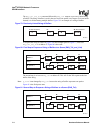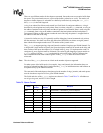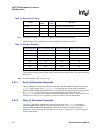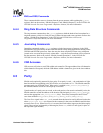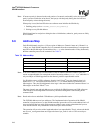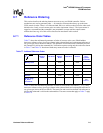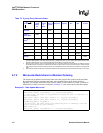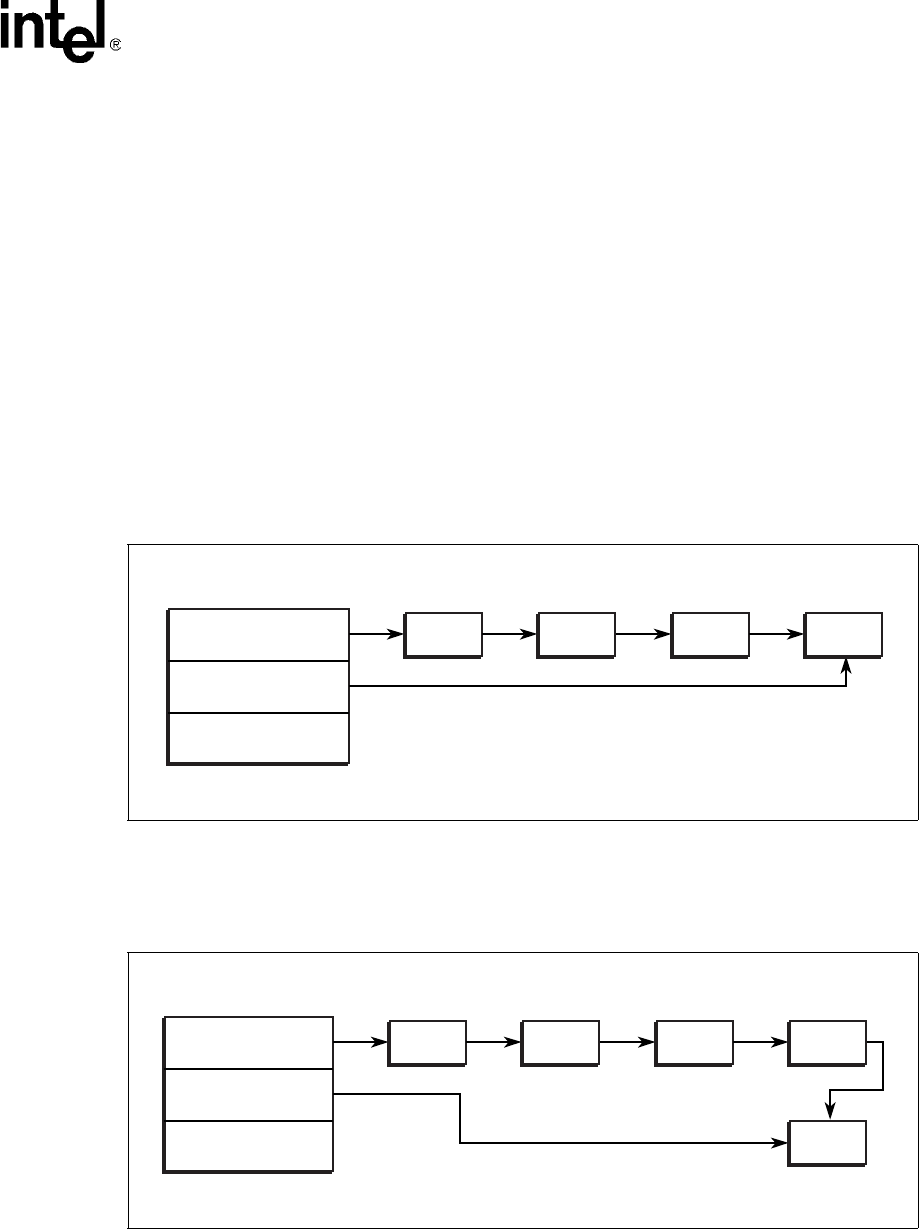
Hardware Reference Manual 213
Intel
®
IXP2800 Network Processor
SRAM Interface
6.4.3 Queue Data Structure Commands
The ability to enqueue and dequeue data buffers at a fast rate is key to meeting chip performance
goals. This is a difficult problem as it involves dependent memory references that must be turned
around very quickly. The SRAM controller includes a data structure (called the Q_array) and
associated control logic to perform efficient enqueue and dequeue operations. Optionally, this
hardware (or a portion of it) can be used to implement rings and journals.
A queue is an ordered list of data buffers stored at non-contiguous addresses. The first buffer added
to the queue will be the first buffer removed from the queue. Queue entries are joined together by
creating links from one data buffer to the next. This hardware implementation supports only a
forward link. A queue is described by a pointer to its first entry (called the head) and a pointer to its
last entry (the tail). In addition, there is a count of the number of items currently on the queue. This
triplet (head, tail, and count) is referred to as the queue descriptor. In the IXP2800 chips, the queue
descriptor is stored in that order — head first, then tail, then count. The longword alignment of the
head addresses for all queue descriptors must be a power of two. For example, when there are no
extra parameters on the queue descriptor, there will be one unused longword per queue descriptor.
Figure 77 shows a queue descriptor and queue links for a queue containing four entries.
There are two different versions of the enqueue command,
ENQ_tail_and_link and ENQ_tail.
ENQ_tail_and_link
enqueues one buffer at a time. In Figure 77, issuing an
ENQ_tail_and_link to buffer link address Z results in the queue shown in Figure 78.
Figure 77. Queue Descriptor with Four Links
A9736-01
Head: A
Tail: D
Q_Count: 4
B
A:
C
B:
D
C:
No Link
D:
Figure 78. Enqueueing One Buffer at a Time
A9737-01
Head: A
Tail: Z
Q_Count: 5
B
A:
C
B:
D
C:
Z
D:
No Link
Z:



